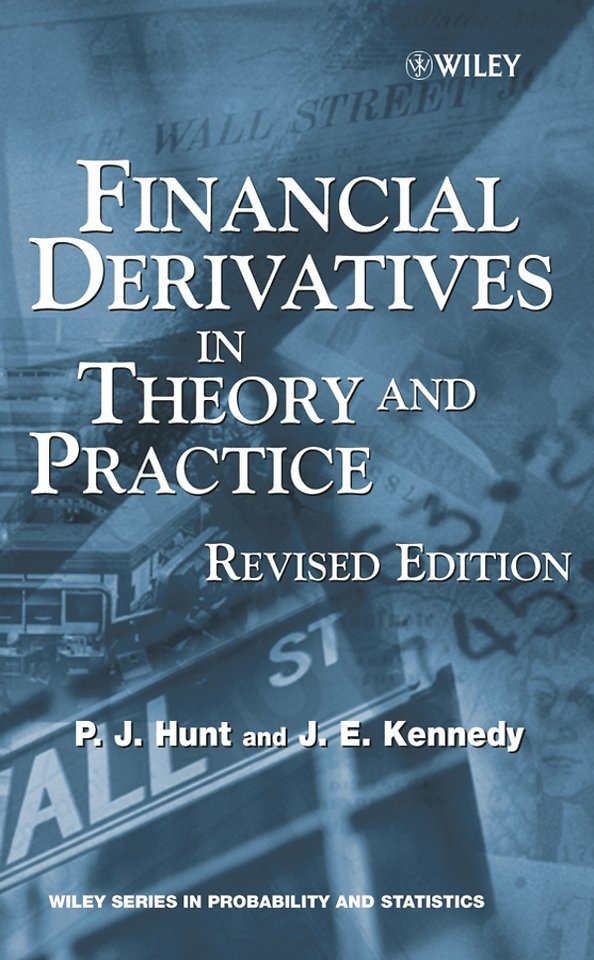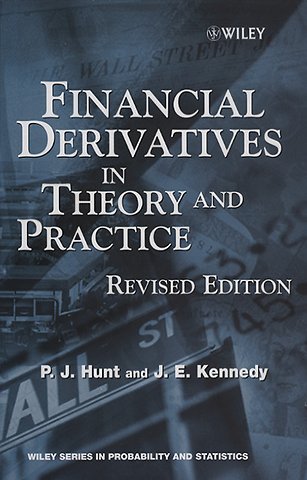Financial Derivatives in Theory and Practice
Samenvatting
Financial Derivatives in Theory and Practice' is een compleet, nauwgezet en leesbaar verslag van de wiskunde die ten grondslag ligt aan 'derivative pricing' en een gids voor het toepassen van deze ideeën om echte prijsstellingproblemen op te lossen. Dit boek is gericht op vakmensen en onderzoekers die zich willen verdiepen in de laatste financiële literatuur en hun eigen prijsstellingmodellen willen ontwikkelen.
Specificaties
Inhoudsopgave
Preface.
Acknowledgements.
Part I: Theory.
1 Single-Period Option Pricing.
1.1 Option pricing in a nutshell.
1.2 The simplest setting.
1.3 General one-period economy.
1.4 A two-period example.
2 Brownian Motion.
2.1 Introduction.
2.2 Definition and existence.
2.3 Basic properties of Brownian motion.
2.4 Strong Markov property.
3 Martingales.
3.1 Definition and basic properties.
3.2 Classes of martingales.
3.3 Stopping times and the optional sampling theorem.
3.4 Variation, quadratic variation and integration.
3.5 Local martingales and semimartingales.
3.6 Supermartingales and the Doob—Meyer decomposition.
4 Stochastic Integration.
4.1 Outline.
4.2 Predictable processes.
4.3 Stochastic integrals: the L2 theory.
4.4 Properties of the stochastic integral.
4.5 Extensions via localization.
4.6 Stochastic calculus: Itô's formula.
5 Girsanov and Martingale Representation.
5.1 Equivalent probability measures and the Radon—Nikodým derivative.
5.1.1 Basic results and properties.
5.2 Girsanov's theorem.
5.3 Martingale representation theorem.
6 Stochastic Differential Equations.
6.1 Introduction.
6.2 Formal definition of an SDE.
6.3 An aside on the canonical set-up.
6.4 Weak and strong solutions.
6.5 Establishing existence and uniqueness: Itô theory.
6.6 Strong Markov property.
6.7 Martingale representation revisited.
7 Option Pricing in Continuous Time.
7.1 Asset price processes and trading strategies.
7.2 Pricing European options.
7.3 Continuous time theory.
7.4 Extensions.
8 Dynamic Term Structure Models.
8.1 Introduction.
8.2 An economy of pure discount bonds.
8.3 Modelling the term structure.
Part II: Practice.
9 Modelling in Practice.
9.1 Introduction.
9.2 The real world is not a martingale measure.
9.3 Product-based modelling.
9.4 Local versus global calibration.
10 Basic Instruments and Terminology.
10.1 Introduction.
10.2 Deposits.
10.3 Forward rate agreements.
10.4 Interest rate swaps.
10.5 Zero coupon bonds.
10.6 Discount factors and valuation.
11 Pricing Standard Market Derivatives.
11.1 Introduction.
11.2 Forward rate agreements and swaps.
11.3 Caps and floors.
11.4 Vanilla swaptions.
11.5 Digital options.
12 Futures Contracts.
12.1 Introduction.
12.2 Futures contract definition.
12.3 Characterizing the futures price process.
12.4 Recovering the futures price process.
12.5 Relationship between forwards and futures.
Orientation: Pricing Exotic European Derivatives.
13 Terminal Swap-Rate Models.
13.1 Introduction.
13.2 Terminal time modelling.
13.3 Example terminal swap-rate models.
13.4 Arbitrage-free property of terminal swap-rate models.
13.5 Zero coupon swaptions.
14 Convexity Corrections.
14.1 Introduction.
14.2 Valuation of 'convexity-related' products.
14.3 Examples and extensions.
15 Implied Interest Rate Pricing Models.
15.1 Introduction.
15.2 Implying the functional form DTS.
15.3 Numerical implementation.
15.4 Irregular swaptions.
15.5 Numerical comparison of exponential and implied swap-rate models.
16 Multi-Currency Terminal Swap-Rate Models.
16.1 Introduction.
16.2 Model construction.
16.3 Examples.
16.3.1 Spread options.
Orientation: Pricing Exotic American and Path-Dependent Derivatives.
17 Short-Rate Models.
17.1 Introduction.
17.2 Well-known short-rate models.
17.3 Parameter fitting within the Vasicek—Hull—White model.
17.4 Bermudan swaptions via Vasicek—Hull—White.
18 Market Models.
18.1 Introduction.
18.2 LIBOR market models.
18.3 Regular swap-market models.
18.4 Reverse swap-market models.
19 Markov-Functional Modelling.
19.1 Introduction.
19.2 Markov-functional models.
19.3 Fitting a one-dimensional Markov-functional model to swaption prices.
19.4 Example models.
19.5 Multidimensional Markov-functional models.
19.5.1 Log-normally driven Markov-functional models.
19.6 Relationship to market models.
19.7 Mean reversion, forward volatilities and correlation.
19.7.1 Mean reversion and correlation.
19.7.2 Mean reversion and forward volatilities.
19.7.3 Mean reversion within the Markov-functional LIBOR model.
19.8 Some numerical results.
20 Exercises and Solutions.
Appendix 1: The Usual Conditions.
Appendix 2: L2 Spaces.
Appendix 3: Gaussian calculations
References.
Index.
Anderen die dit boek kochten, kochten ook
Net verschenen
Rubrieken
- aanbestedingsrecht
- aansprakelijkheids- en verzekeringsrecht
- accountancy
- algemeen juridisch
- arbeidsrecht
- bank- en effectenrecht
- bestuursrecht
- bouwrecht
- burgerlijk recht en procesrecht
- europees-internationaal recht
- fiscaal recht
- gezondheidsrecht
- insolventierecht
- intellectuele eigendom en ict-recht
- management
- mens en maatschappij
- milieu- en omgevingsrecht
- notarieel recht
- ondernemingsrecht
- pensioenrecht
- personen- en familierecht
- sociale zekerheidsrecht
- staatsrecht
- strafrecht en criminologie
- vastgoed- en huurrecht
- vreemdelingenrecht







